What Color Should My Grass Be?
- Milorganite AgronomistMarch 12, 2022
“The grass is always greener on the other side of the fence.” But what shade of green is it?
None of us sees color in the same way, so we try to differentiate one green from another by adding descriptive adjectives. There are numerous ways we describe the color of grass such as rich; lush; deep; blue; Kelly; emerald; gray; and yellowish, among others. There’s even “grass green,” but my vision of grass green may be (is likely) different than yours. Even one species of grass may have several cultivars with a variety of different characteristics, including color variations.
Homeowners often have a color in mind when it comes to their “perfect lawn color,” which is typically dark, blue-green. But is it achievable? Nutrients can bring out the best green a grass species can be, but it will never change its basic color.
If you’re starting a lawn from seed, I recommend using a blend of cultivars or a mix of species for a more resilient lawn. I’ve provided a table at the end that includes information on popular species of grass, including their color, which is another criterion you can use when creating the green lawn of your dreams.
Go to Grass Color and Characteristic Chart
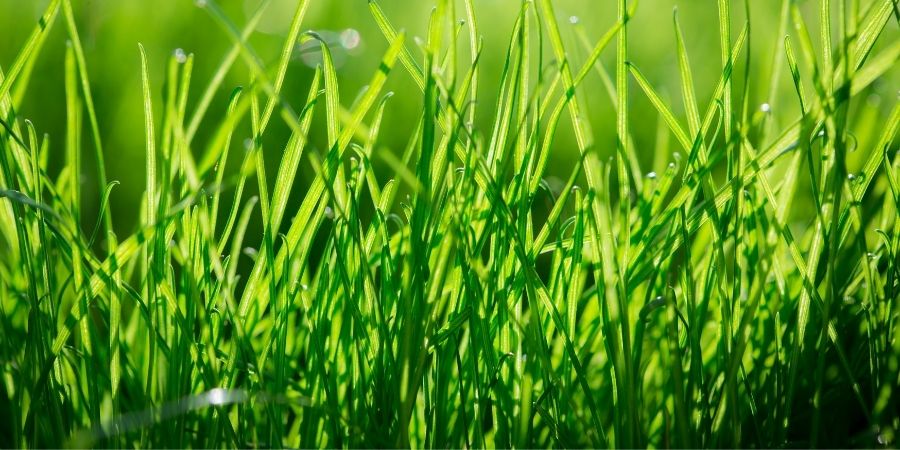
What Makes Grass Green?
Plants look green because of chlorophyll’s green pigment which is essential to photosynthesis. Plants make their own food through chlorophyll, in addition to absorbing needed nutrients from the soil.
Chlorophyll absorbs all but the green wavelengths of light, which is reflected and gives plants their green color. The energy, usually in the form of sunlight, is used to produce glucose, a type of sugar, from water and carbon dioxide from the air. The glucose is used as food by the plants. The resulting oxygen created as a byproduct of the process is released into the atmosphere.
Nitrogen and iron are two nutrients that help to make grass green. Nitrogen, a macronutrient, promotes top growth and allows the grass blades to absorb more light for photosynthesis. Iron, a micronutrient, helps in the production of chlorophyll and helps turn grass darker green—at least as green as any particular grass species can get.
Milorganite’s Slow-Release Nitrogen
The nutrient analysis of Milorganite is 6-4-0: 6% nitrogen; 4% phosphorus; and, 0% potassium, indicating there is less than 1% potassium.
The slow-nitrogen in Milorganite is at least 80% water-insoluble. This is important to know since some communities restrict the amount of water-soluble nitrogen you can throw down on your lawn at particular times of the year. Some community ordinances require granular fertilizer products that contain a minimum of 50% slow-release nitrogen to help prevent runoff.
How Milorganite Iron Works
Iron is the other nutrient that promotes green lawns. The iron content of Milorganite can vary slightly, but it’s guaranteed to have at least 2.5% iron in every bag.
The iron in Milorganite works like the more expensive chelated iron salts, which makes it water-soluble. Iron salts can also burn your lawn and stain concrete.
Milorganite’s iron won’t burn your lawn. It’s slowly released into the soil, where the grass needs it most. Foliar applications of iron, by comparison, cover the leaf blade with iron and are gradually removed every time you cut the lawn.
Don’t use more than one iron supplement on your lawn. Grass can only use so much iron or any other nutrient. Excess iron may result in nutrient run-off into the local waterway. That’s also money down the sewer.
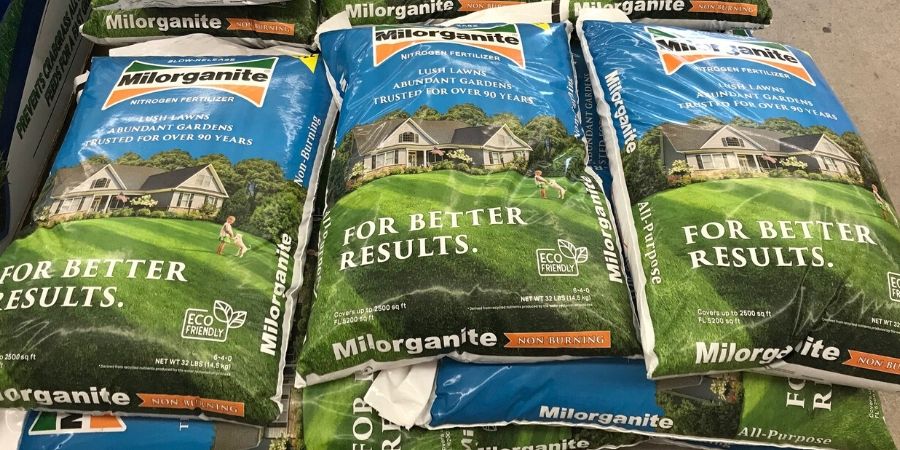
My Grass is Turning Yellow!!!
Iron Chlorosis vs. Nitrogen Deficiency: Similar but Different
Both iron chlorosis and nitrogen deficiency cause grass to turn yellow-green or yellow. Iron chlorosis is caused by a lack of iron and normally green leaves turn yellow, due to a lack of chlorophyll.
In addition to iron deficiency, other factors that may contribute to chlorosis, include high pH, drought, poor drainage, and compacted soil.
There’s a visual cue to look for as a first step to help differentiate between the two. Iron chlorosis causes young grass blades to turn yellow from the top down. The area between the veins of the leaf blade turns yellow.
Nitrogen deficiency also causes grass blades to yellow, but the discoloration is on old-growth and starts from the bottom of the leaf blade. The yellowing will be general rather than just between veins. Slow growth and thinning lawns are also signs of nitrogen deficiency.
There are additional signs to identify iron chlorosis and nitrogen deficiency. University of Arizona Cooperative Extension has a guide to symptoms of nutrient deficiencies and how to differentiate them.
Milorganite’s nitrogen is slow-release, making nutrients available to plants as they need them rather than all at once like liquid and most granular chemical fertilizers. Milorganite contains six percent nitrogen. Every pellet of Milorganite includes the entire nutrient analysis. Many chemical fertilizers mix separate granules of different components.
Managing Your Lawn Expectations
Why is your grass greener than mine?
Homeowners throughout the country pine over the aesthetic beauty of a dark, blue-green lawn and want to duplicate the rich color in their own yards. But there are limitations.
Grass color depends primarily on the species, or variety, of grass. Kentucky Bluegrass, referred to as KBG in the turf industry is the most widely used in the North, where cool-season grasses thrive. Without realizing it, KBG is the standard many homeowners use to gauge the color of their lawns. It’s not fair to compare different turfgrass species and cultivars. Ryegrass, a cool-season grass, for example, is dark green, but will never achieve the dark green as KBG. It’s not an apples-to-apples comparison.
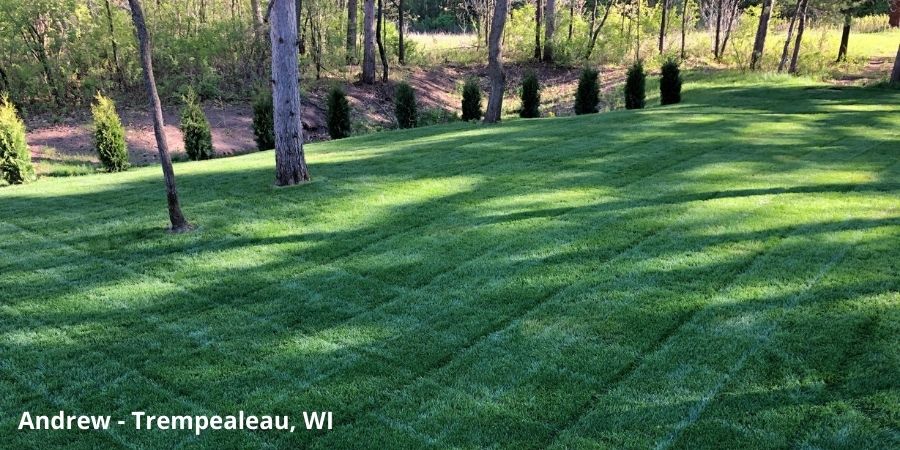
Allyn Hane, The Lawncare Nut, has some advice to help manage your expectations of how green your lawn “should” be.
“People often see the green lawn of their dreams online and compare it to their own. If you’re in the South admiring a post of a deep, green-blue Kentucky Bluegrass, a cool-weather grass, let go of that dream. A warm-season grass will never achieve the same color as KBG. Although there are species of warm-season grasses that are bred to be a darker green, it still can’t compare.”
If you live in an area of the country where warm-weather grasses flourish, you will never grow a lawn as dark and blue-green as you can grow in the North. Never.
Allyn suggests making reasonable comparisons. “If you are going to compare the color of your lawn to others, compare to those right around you, in the same neighborhood. Likely you all will have similar grass types and therefore you can use the Milo N (nitrogen) and Fe (iron) to show off locally, instead of nationally, on [social media]. Kentucky Bluegrass will have the deepest, darkest, blue-green color of any grass you compare it to just by its very nature.”
More Milorganite Will Not Change the Natural Color of a Turfgrass Species
The color of turfgrass primarily depends on the species and cultivar of grass, and to a lesser degree climate, sun, water, and nutrients. Color variations often occur within a species, but you’re never going to change a light-green turfgrass species like Centipedegrass to a dark green-blue. When selecting grass species for your yard, look for newer, improved cultivars with improved color, drought tolerance, and disease resistance. You might be able to get a bit closer to that enviable color.
No matter how much Milorganite you use on your lawn, you can only achieve a color within the range of a particular species or cultivar of turfgrass. Plainly stated: no amount of Milorganite will ever change the natural color of a grass. Never. Apply Milorganite at the suggested rates and you’ll get the best results for your species of turfgrass.
You may also notice a color difference between newly planted grass and mature plants. Healthy, established grass will be darker than newly seeded lawns. Grass seeded in the fall will appear lighter in spring until stronger root systems grow.
Grass Seed Blend or Mix for a Healthier, More Resilient Lawn
There’s a difference between a “blend” and “mix” of grass seed. A blend of grasses is the combination of two or more cultivars of the same species. In other words, mixing Victa and Vantage, two Bluegrass cultivars, would be considered a blend of grasses. A mix is when two or more species of grass are combined, such as KBG and Ryegrass.
A mix of various grass species should be used anytime you’re seeding. Different species have varied traits. For example, one grass species may do better in drought conditions and the other may be more disease resistant. A mix of grasses offers some insurance that your lawn won’t be wiped out from a disease that generally infects the same species of grass in the entire lawn.
Seeding your lawn with more than one species or cultivar of grass can help you achieve the color you’re looking for, as well as promote a healthier lawn that is also more resistant to diseases and pests. If you seed only using KBG and there’s a disease that targets this species, your entire lawn may be affected. If you add some Ryegrass and Fescues to the mix, for example, your lawn should fare better. You don’t risk losing your entire lawn.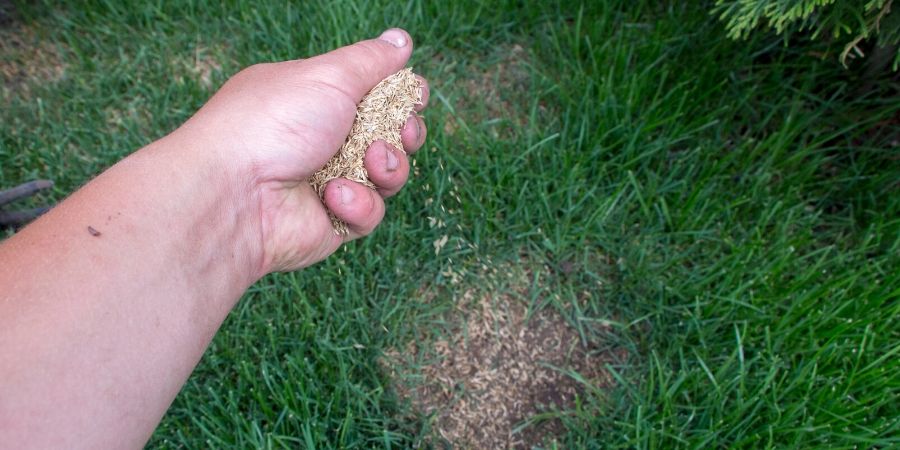
Mixes of two or more species of turfgrass or blends of two or more cultivars of the same species are recommended for cool-season grasses. Most warm-season grasses are established vegetatively using sod, plugs, and sprigs. Look for sod that includes a blend or mix of grasses.
Although you can use a blend or mix of seed that includes one that will do well in sunny locations and another for shady conditions, you’re better off creating a blend or mix specifically for sunny areas and another just for shady areas. Mixing both shade-tolerant and sun-loving seeds for easy application, can sometimes needlessly waste of seed.
Here are some recommended blends and mixes of turfgrass for specific settings provided by Kansas State University. Although these combinations are for Midwest sites, they can be generalized for areas where cool-season grasses grow.
Full Sun
- KBG blend (three or more KBG cultivars)
- 80+% KBG/perennial ryegrass
- Tall fescue blend (three or more tall fescue cultivars)
- Buffalograss
- Bermudagrass (southern portion of Midwest)
- Zoysiagrass (southern portion of Midwest)
Dry Shade
- 30-50% blend of shade-tolerant KBG + 50-70% fine-leaf fescues
- Tall fescue blend
- Zoysiagrass (southern portion of Midwest)
Wet Shade
- 70% or more rough bluegrass + remainder in blend of shade-tolerant KBG
Summary
The most simplistic color description of grass is “green,” but that doesn’t begin to describe the nuances of color within each species and cultivar. Knowing what color to expect from the grass species in your lawn is a start to managing your expectations of what color “green” your grass should be.
No matter how hard you try or how many nutrients you add to your lawn, you’re never going to change the natural color of a grass species or cultivar. Like Allyn said, aim to have the greenest lawn in your neighborhood rather than comparing it to grass species that are greener that you can never grow.
The following table highlights the color of popular cool-season and warm-season grass species and includes other basic information. Knowing the days to germinate, for example, is very helpful. You don’t want to give up before the seed has a chance to grow.
Grass Type Color, Characteristics, and Mowing Height Chart
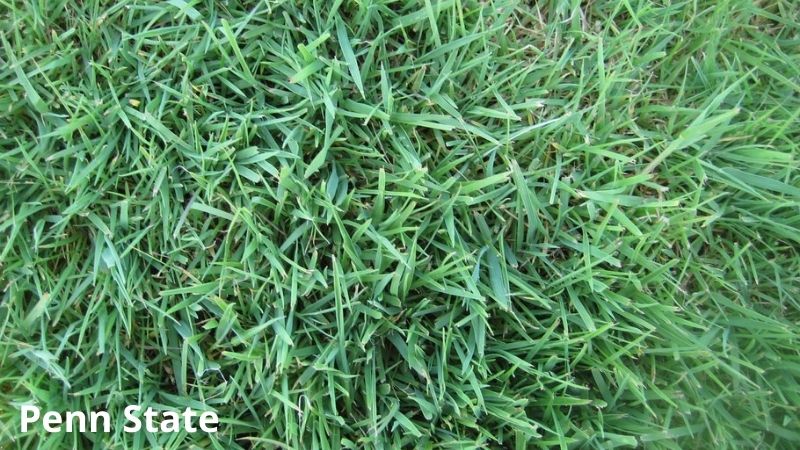
| Cool-Season Grass Species | Color | Characteristics | Days to Germination | Tip Shape and Blade Width | Performance Growth Habit | Mowing Height |
|---|---|---|---|---|---|---|
| Bentgrass | medium green/bluish-green | dense mat; resilient turfgrass | 10 - 14 | Slender stems, flat leaf; soft texture | Stolons or rhizomes | .5 - 1.0 |
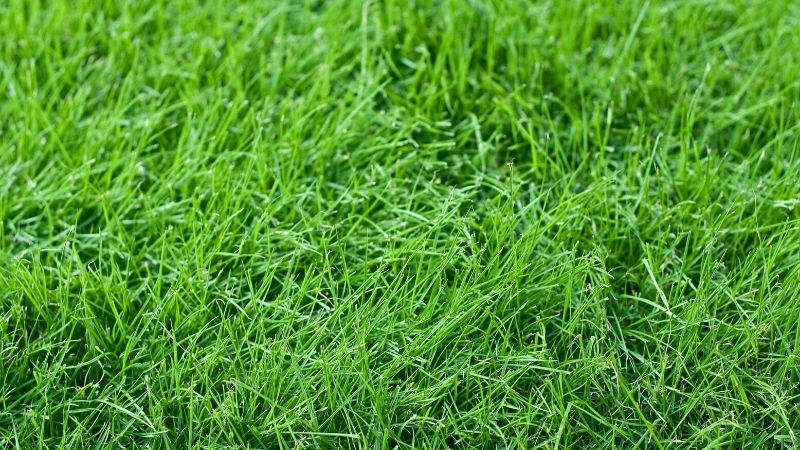
| Cool-Season Grass Species | Color | Characteristics | Days to Germination | Tip Shape and Blade Width | Performance Growth Habit | Mowing Height |
|---|---|---|---|---|---|---|
| Fescue, fine | dull green to medium/dark green (Color varies by cultivar and can including: medium to dark green, blue-green and gray-green, dull- or gray-green | shade tolerant; key to mixes for yards with dense shade | 7 – 14 | Sharp-pointed; very fine/narrow; soft/finely textured | variable, bunching/clumping or rhizomes | 2.0 – 3.5 |

| Cool-Season Grass Species | Color | Characteristics | Days to Germination | Tip Shape and Blade Width | Performance Growth Habit | Mowing Height |
|---|---|---|---|---|---|---|
| Fescue, traditional tall | Light to dark/deep emerald green | standard for durable, economical lawns, best shade tolerance next to fine fescues, excellent heat/drought tolerance | 7 – 14 | sharp-pointed; medium to broad; course texture, very dense | bunching/clumping | 2.5 – 4.0 |
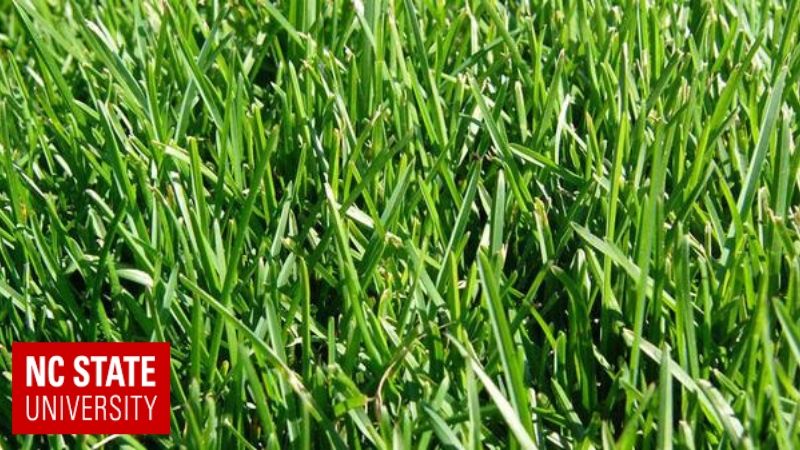
| Cool-Season Grass Species | Color | Characteristics | Days to Germination | Tip Shape and Blade Width | Performance Growth Habit | Mowing Height |
|---|---|---|---|---|---|---|
| Kentucky bluegrass (KBG) | dark blue-green; dark/deep green; dark emerald green | common in full-sun and shade grass mix. epitome of the ideal lawn | 14 – 30 | boat-shaped; narrow to medium to fine texture | spreading, rhizomes; dense; aggressive growth | 2.0 – 3.5 |
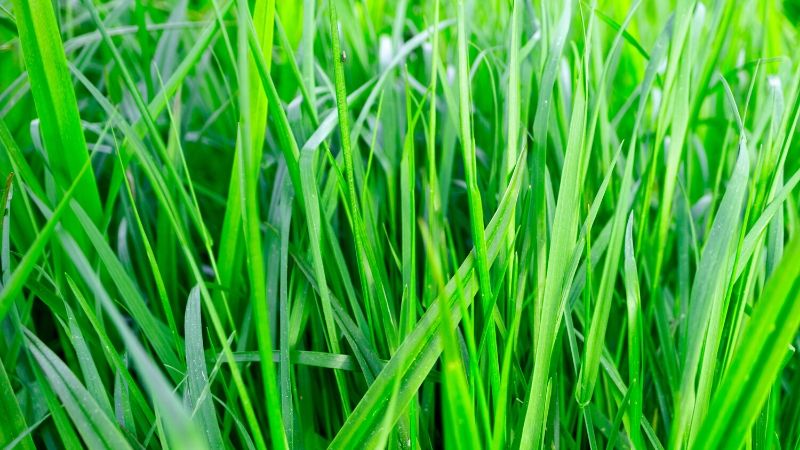
| Cool-Season Grass Species | Color | Characteristics | Days to Germination | Tip Shape and Blade Width | Performance Growth Habit | Mowing Height |
|---|---|---|---|---|---|---|
| Ryegrass, perennial | shiny, medium/dark green | permanent in Northern lawns, used to overseed Southern lawns for winter color, does well in cool, humid climates; typically used in a blend and for overseeding; | 5 – 10 | sharp pointed; fine/narrow to medium; fine texture | bunching/clumping; dense; fast growing | 2.0 – 3.5 |
Warm-Season Grass Species
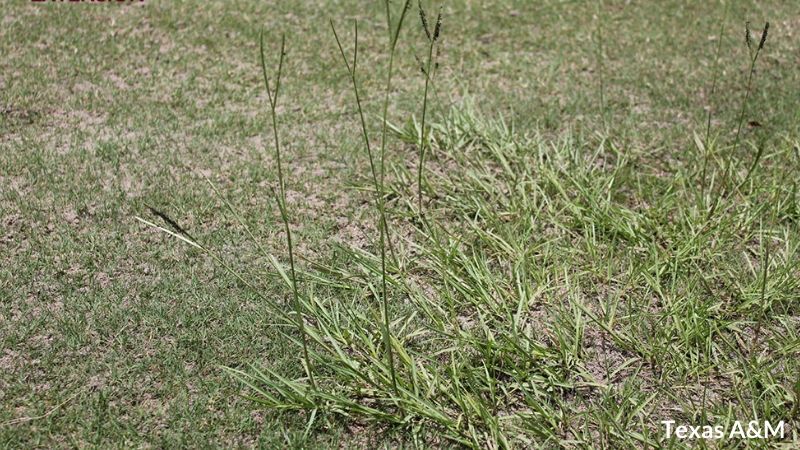
| Warm-Season Grass Species | Color | Characteristics | Days to Germination | Tip Shape and Blade Width | Performance Growth Habit | Mowing Height |
|---|---|---|---|---|---|---|
| Bahiagrass, perennial | light/medium green | thrives in heat and humidity; durable; drought resistant; best in sandy soil | 14 - 28 days | sharp-pointed; thin to broad; very course texture | spreading, stolon-like rhizomes | 3.0 – 4.0 |
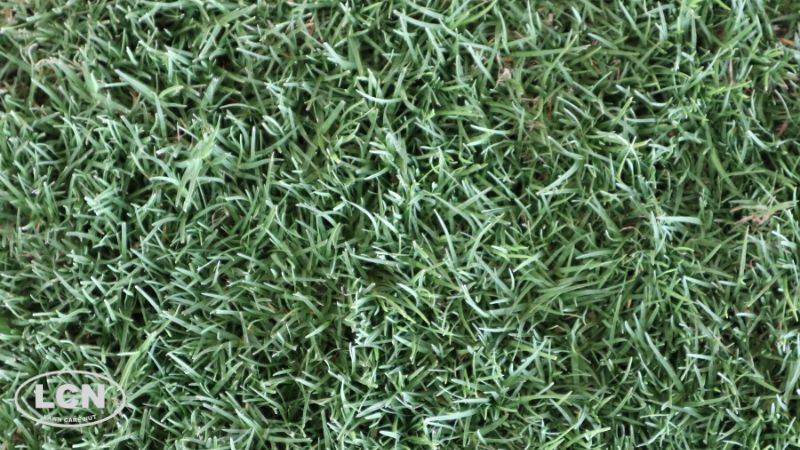
| Warm-Season Grass Species | Color | Characteristics | Days to Germination | Tip Shape and Blade Width | Performance Growth Habit | Mowing Height |
|---|---|---|---|---|---|---|
| Bermudagrass | medium to rich dark/deep green | heat/drought tolerant; common warm-season grass; requires full sun | 10 - 30 | sharp-pointed; narrow: medium to fine texture | spreading, stolon and rhizomes; spreads above and below ground; thick/dense; aggressive growth | .5 – 2.0 |
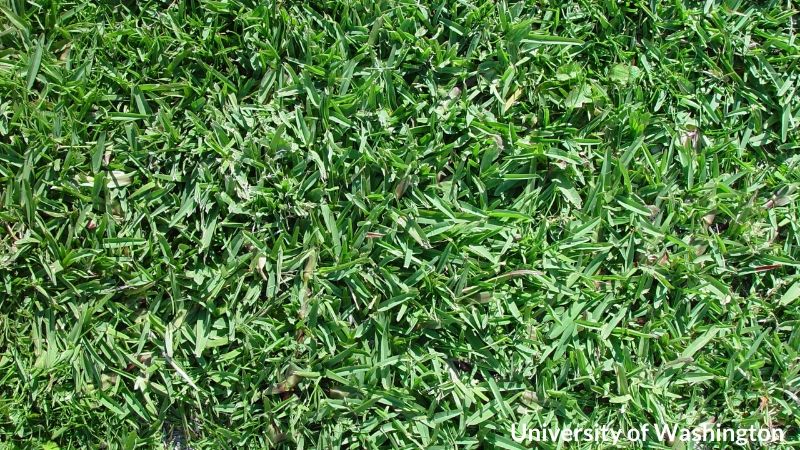
| Warm-Season Grass Species | Color | Characteristics | Days to Germination | Tip Shape and Blade Width | Performance Growth Habit | Mowing Height |
|---|---|---|---|---|---|---|
| Bermudagrass | gray-green | tolerates wide-range of soil types; full sun | 14 - 30 | fine texture | spreading, stolon and rhizomes; spreads above and below ground; thick/dense; aggressive growth | 1.0 – 2.0 |
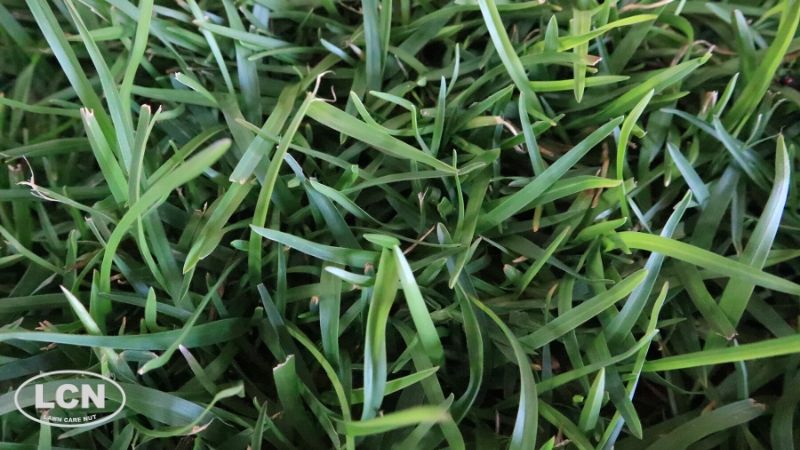
| Warm-Season Grass Species | Color | Characteristics | Days to Germination | Tip Shape and Blade Width | Performance Growth Habit | Mowing Height |
|---|---|---|---|---|---|---|
| Centipedegrass | lime, light/medium green | low-maintenance; low, slow growth | 14 - 21 | boat-shaped to sharp-pointed; medium to course texture | spreading, stolons; short, mat-like; thick | 1.5 – 1.0 |
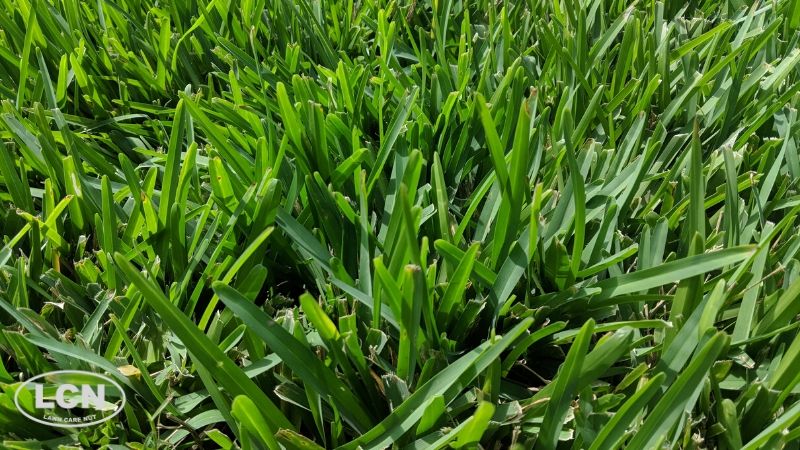
| Warm-Season Grass Species | Color | Characteristics | Days to Germination | Tip Shape and Blade Width | Performance Growth Habit | Mowing Height |
|---|---|---|---|---|---|---|
| St. Augustine grass | Light/medium/dark green | pushes out other grass types and weeds; cannot be seeded | 7 - 14 | rounded tip; wide; course textured | spreads quickly; available as sod, plugs and sprigs | 2.0 – 4.0 |
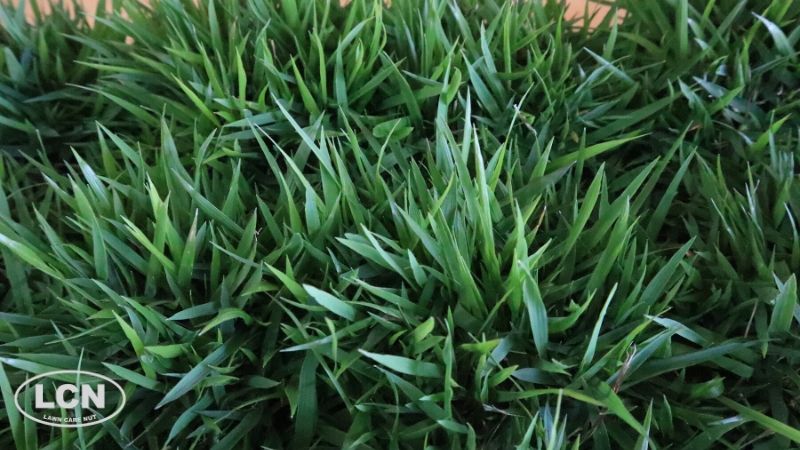
| Warm-Season Grass Species | Color | Characteristics | Days to Germination | Tip Shape and Blade Width | Performance Growth Habit | Mowing Height |
|---|---|---|---|---|---|---|
| Zoysiagrass | light to medium green; sometimes grayish-green | stays green longer in fall, greens up early in spring; heat/cold tolerant | 14 - 21 | sharp-pointed; narrow to medium; prickly; fine to medium texture; thick/dense | spread, stolons rhizomes; difficult to establish from seed | 2.0 – 2.5 |

